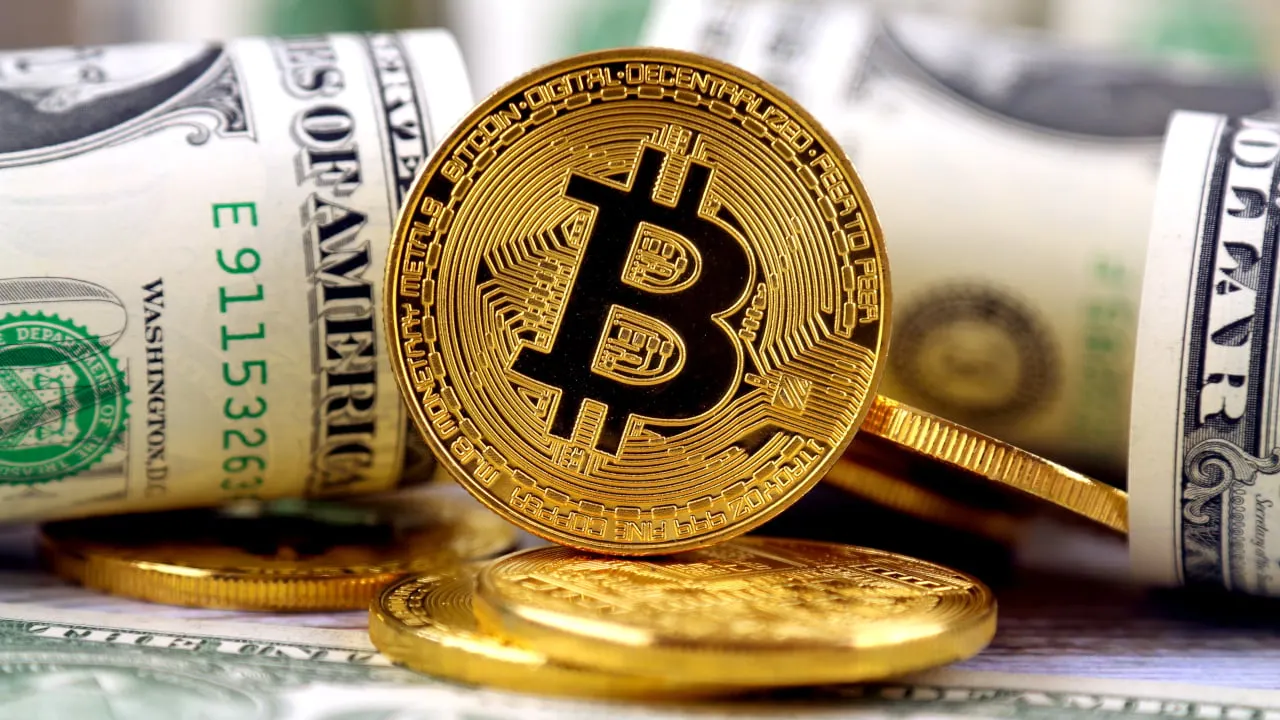In brief
- Bitcoin has broken its previous all-time high of $19,783.
- The previous all-time high was set during the famous 2017 bull run.
- Today's all-time high has been driven in large part by major Bitcoin investments made this year.
Bitcoin has broken its all-time high price of $19,783, overcoming its previous record set during the 2017 bull run. Since then, the cryptocurrency has fallen back somewhat to $19,600 but it's incredibly volatile and the price is changing by hundreds of dollars in minutes.
While Bitcoin’s price is up over 170% since the start of 2020, this bull run truly began in earnest in August, when a series of high profile Bitcoin investments—kickstarted by business intelligence firm MicroStrategy—helped to propel the cryptocurrency to record-breaking heights.
“Broadly speaking, institutional positions and high-net-worth individuals are leading the way this time and the Bitcoin they purchase is much more likely to be held long term rather than find its way back to the exchange,” Jason Deane, Bitcoin analyst at Quantum Economics, told Decrypt.
The figures back this theory up. Since MicroStrategy started investing in Bitcoin, several key indicators—and not just its price—have surged.

Between January 1 and August 10, Bitcoin’s price increased from $7,182 to $11,850, marking an increase of 65% over 10 months.
Since August 11—the date of MicroStrategy's first Bitcoin investment—the cryptocurrency’s price increased by 65% yet again, this time on its way to breaking its previous high of $19,665. But this time, the increase only took three and a half months.
During the same three month period, Bitcoin’s market cap increased by 64% from $216 billion to $356 billion.
The cryptocurrency’s trading volume has also doubled since August, increasing from $23 billion to $48 billion, indicating that Bitcoin has captured the interest of the market since its bull run began.
But, exactly what role have big investors played in Bitcoin’s record-breaking success?
Institutional praise for Bitcoin
Institutional investments into Bitcoin began when MicroStrategy invested $250 million in the cryptocurrency on August 11, 2020. On September 8, 2020, that figure was bumped up to $425 million.
On October 8, 2020, Square followed suit, investing $50 million—1% of the company’s total assets—in Bitcoin.
PayPal also entered the Bitcoin arena during this time. On October 21, the payments giant announced it would be offering payment support for Bitcoin (as well as other cryptocurrencies). Fast forward to November 21, and PayPal had reportedly bought 70% of the Bitcoin that had been mined over the previous 30 days.
But these figures only tell half the story. Arguably, what mattered most to Bitcoin’s meteoric rise was the praise that accompanied these investments.
“Bitcoin is digital gold - harder, stronger, faster, and smarter than any money that has preceded it,” MicroStrategy said in a statement announcing its first Bitcoin investment, on August 11, 2020.
Since then, the firm’s CEO, Michael Saylor, has become one of Bitcoin’s loudest and most outspoken advocates.
#Bitcoin is a swarm of cyber hornets serving the goddess of wisdom, feeding on the fire of truth, exponentially growing ever smarter, faster, and stronger behind a wall of encrypted energy.
— Michael Saylor (@michael_saylor) September 18, 2020
In addition, Square’s chief financial officer at the time of the company’s investment, Amrita Ahuja, said, “We believe that Bitcoin has the potential to be a more ubiquitous currency in the future.”
Ahuja also said that, “For a company that is building products based on a more inclusive future, this investment is a step on that journey.”
But these statements only take us to October. At the time of Square’s investment in Bitcoin, the price was at approximately $10,800, nearly $9,000 away from today’s all-time high.

Now let’s fast forward to November 9, when billionaire investor Stanley Druckenmiller—who managed George Soros’ money in the 1990s—publicly said that Bitcoin was better than gold.
“It could be an asset class that has a lot of attraction as a store of value to both Millennials and to the new West Coast money—and as you know they’ve got a lot of it,” Druckenmiller said on CNBC.
Bitcoin’s price seemingly took notice of this praise. On November 9, Bitcoin opened the day on $15,479. Just four days later, the $16,000 barrier was broken as Bitcoin rose to $16,463.
Now nearly a week ago, Rick Rieder, BlackRock CIO, also chimed in about Bitcoin’s ability to replace gold.
“Do I think it’s a durable mechanism, do I think it will take the place of gold to a large extent? Yeah, I do, because it’s so much more functional than passing a bar of gold around,” Rieder said. Other commentators have also been noting gold’s recent decline, and taking more notice of Bitcoin.

Just two days ago, PayPal’s CEO Dan Schulman similarly commented, “I think [digital currencies] start to move from being less of just an asset class and more into a currency. And when you start to move crypto as a potential funding instrument, I think that bolsters its utility, and stabilizes it as well.”
Public praise for Bitcoin is one thing, but there are many other factors that have contributed to this all-time high.
Macro-market indicators
According to Binance Research, there are several factors that help to explain Bitcoin’s price surge.
For starters, Bitcoin is perceived to be a hedge against inflation. In other words, as governments continue to provide economic relief amidst the COVID-19 pandemic, the value of fiat currencies could continue to fall due to inflation.
Consequently, there has been a pivot to safe-haven assets, including Bitcoin. “This flight into safe-haven assets seems to be on its way,” Binance Research provided to Decrypt states, observing that Bitcoin has produced “year to date returns of approximately 248%.”
What’s more, Bitcoin’s bull run has benefited from some under-the-radar influences like increased regulatory scrutiny, a surging futures market, and streamlined access to the cryptocurrency not seen during the 2017 bull run.
“Over the last three years, an increasing regulatory certainty enabled the entrance of licensed custodians, which are now at the center of a prime brokerage industry and are absolutely crucial in enabling companies to hold Bitcoin,” Binance Research added.
In summary, the Bitcoin market is drastically different today than it was three years ago.
What Bitcoin’s success means for the rest of crypto
Historically, when Bitcoin’s price has surged, so too has the altcoin market.
In 2017, when Bitcoin last flirted with heights of near $20,000 between December 2017 and January 2018, several crypto competitors went on bull runs of their own.

Two cryptocurrencies of note in this regard are Ethereum and XRP, which both surged during Bitcoin’s bull run in 2017.
Ethereum rose from $440 on December 1, 2017, to $1,347 on January 13, 2018. Similarly, XRP shot up from $0.25 on December 4, 2017, to $3.75 on January 4, 2020.
So far, both Ethereum and XRP have been dragged up by Bitcoin’s current bull run too. This time, Ethereum hit the $600 mark for the first time in over two years. What’s more, its price is still going up, having seen a 25% increase in the last seven days.
In addition, XRP has experienced a spike of its own this time around too, jumping from about $0.60 to just under $1 on November 24, 2020.
Now that Bitcoin’s in uncharted territory, there is really no telling what lies ahead—for it, and the rest of the market.
Disclaimer
The views and opinions expressed by the author are for informational purposes only and do not constitute financial, investment, or other advice.

